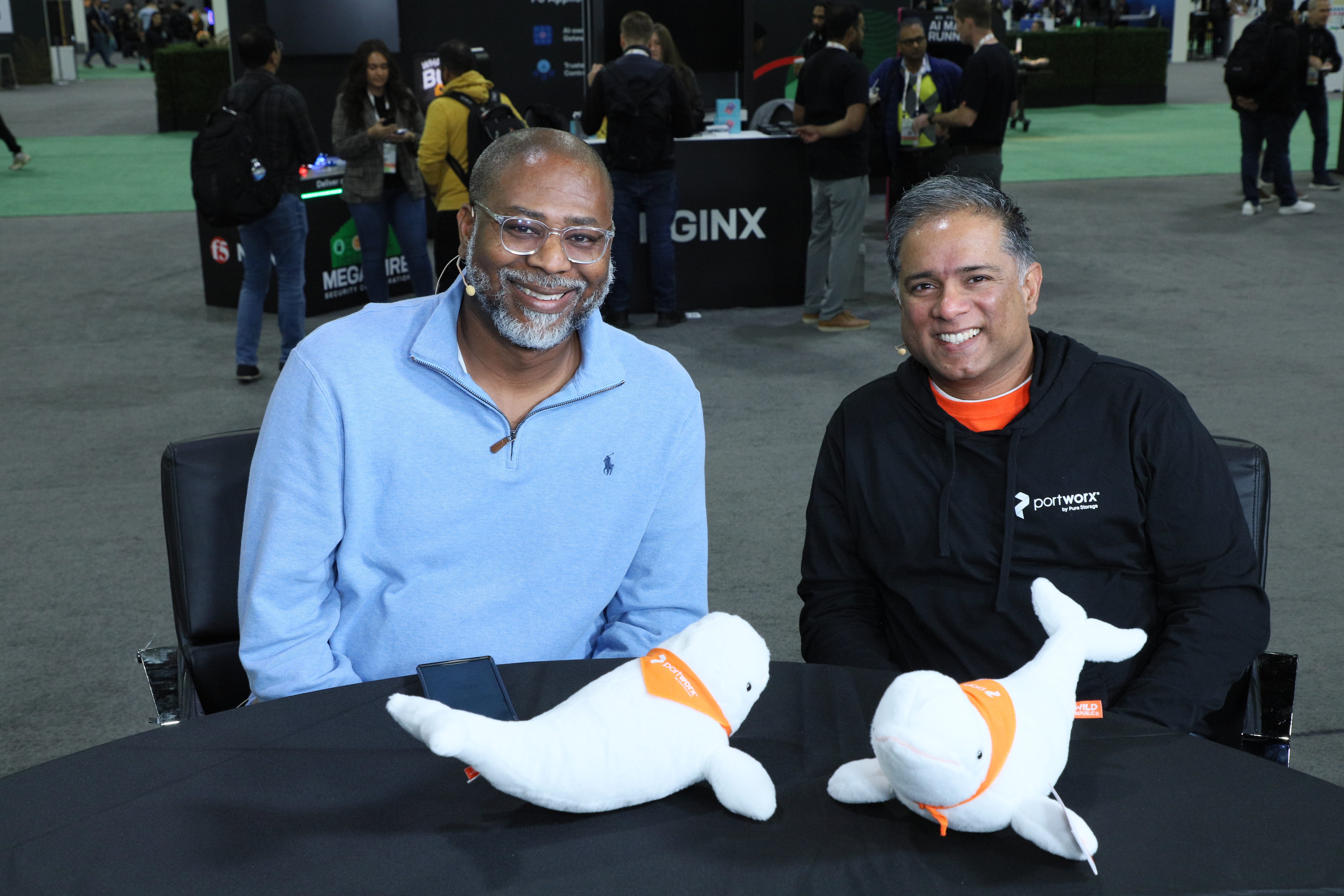 AI
AI
 AI
AI
 AI
AI
Enterprises are moving beyond traditional virtualization and toward platforms that deliver greater flexibility while maintaining control. The payoff — and the challenge — is a new era of modern data management.

Blue Cross Blue Shield of Alabama’s Victor Williams and Portworx by Pure Storage’s Venkat Ramakrishnan talk with theCUBE about Kubernetes for data management.
As organizations reassess their virtualization strategies amid industry shifts like the Broadcom-VMware acquisition, many are making pivotal choices about their data management future. Kubernetes is often favored for its speed, and nonprofits are leading the charge with Container Storage Interface adoption, according to Victor Williams (pictured, left), infrastructure engineering consultant at Blue Cross Blue Shield of Alabama.
“As you know, this Kubernetes stuff moves fast and not every vendor is up to the task,” Williams said. “[Red Hat] provided us with the Portworx CSI, and it has basically revolutionized and made our time to market — our container journey — that much better.”
Williams and Venkat Ramakrishnan (right), vice president and general manager at Portworx by Pure Storage Inc., spoke with theCUBE’s Rob Strechay at the KubeCon + CloudNativeCon NA event, during an exclusive broadcast on theCUBE, SiliconANGLE Media’s livestreaming studio. They discussed how companies are accelerating their shift from traditional virtualization to cloud-native architectures and the evolving modern data management landscape. (* Disclosure below.)
Nonprofits such as Blue Shield are often a proving ground for innovation, with tight budgets requiring inventive solutions. As many industries modernize from VMware to KubeVirt, they need a data storage and management layer that’s natively integrated into the Kubernetes ecosystem — something most legacy CSI drivers can’t provide, according to Ramakrishnan. That’s because most CSI drivers haven’t kept up with innovations in the Kubernetes space.
“What Portworx [is] … it’s an infrastructure-neutral data management layer integrated into Kubernetes,” he said. “That means you could run Portworx on any third-party hardware and you can make your data operations and storage management and Kubernetes smooth. But not just that, you could replicate that stack anywhere.”
Portworx has mapped Kubernetes-based data and storage management to the familiar workflows of VMware environments, according to Ramakrishnan. That approach helps organizations transition to Kubernetes without having to relearn or redesign their existing storage operations.
“Portworx has capabilities that maps into that list where a customer who’s used to the VMware data workflows can easily do that without having to relearn a whole bunch of things for Kubernetes,” he said.
Here’s the complete video interview, part of SiliconANGLE’s and theCUBE’s coverage of the KubeCon + CloudNativeCon NA event:
(* Disclosure: Pure Storage sponsored this segment of theCUBE. Neither Pure Storage nor other sponsors have editorial control over content on theCUBE or SiliconANGLE.)
Support our mission to keep content open and free by engaging with theCUBE community. Join theCUBE’s Alumni Trust Network, where technology leaders connect, share intelligence and create opportunities.
Founded by tech visionaries John Furrier and Dave Vellante, SiliconANGLE Media has built a dynamic ecosystem of industry-leading digital media brands that reach 15+ million elite tech professionals. Our new proprietary theCUBE AI Video Cloud is breaking ground in audience interaction, leveraging theCUBEai.com neural network to help technology companies make data-driven decisions and stay at the forefront of industry conversations.